In today’s world, the semi-auto pistol reigns supreme. It seems that in a world with 11+1 micro-compacts, people today often turn their noses up at small-frame revolvers. Make no mistake, small-frame revolvers still have their place in deep cover applications. Especially in non-permissive environments for those who choose to carry anyway.
Sure, some will no doubt scoff at the idea of carrying a five-shot revolver. They have a long double-action trigger pull and a short sight radius. Some people might consider them effective in an elevator and not a lot farther away than that. And besides, they’re so 1960s and ’70s…right?
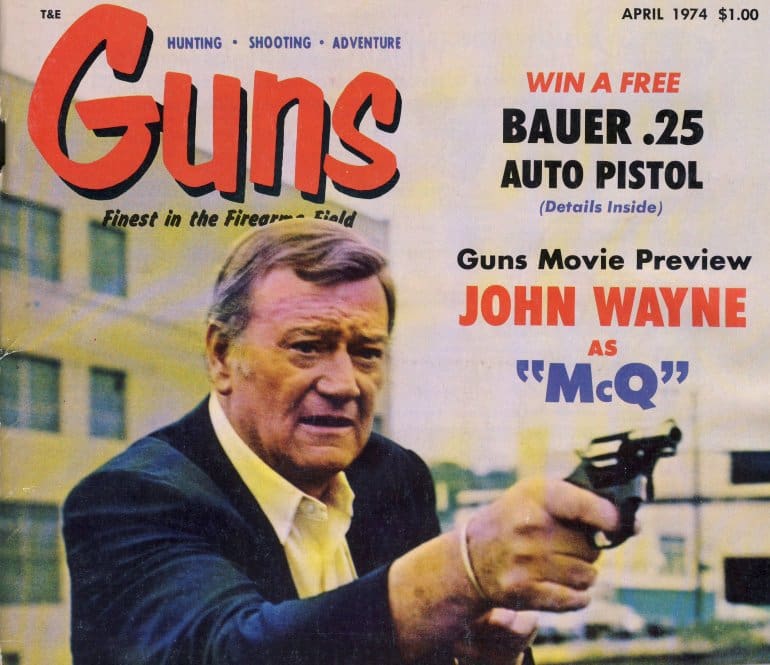
First off, if you can master the double-action trigger of a revolver or a double-action semi-automatic, you can shoot any handgun well. In fact, even in handguns with terrible triggers, those skilled in the art of the double-action trigger can perform at least passably with them. Single action is always an option, too given enough time.
Yes, J-frames like the 642 (or similar-sized guns like the Ruger LCR, Taurus 905, Colt Cobra, Kimber K6s), with their sub-2-inch barrel lengths, have short sight radii. So what? Couple the fundamentals of sight alignment with the art of the double-action trigger pull and combat-effective hits to 50 feet — the outer limits of most self-defense situations –should come almost as easily as using your favorite semi-auto.
Years ago, I won a couple of $20 bills at the Urbana Sportsman’s Club from people who didn’t think I could hit a water-filled milk jug at 100 yards even once with my Ruger SP-101. Little did they know that two hits in five-shot cylinder was my typical performance when warmed up.
Anyone who tells you a snub-nose revolver can’t hit beyond room-length distances doesn’t know of what they speak. Or they’re trying to sandbag you.
Yes, reloads come slowly. You can carry five extras in a speed loader, but deep cover means just that. In pocket carry or an IWB holster, people around you have no idea you have a gun secreted away. Whether you subscribe to the theory or not, Frank McGee of NYPD fame talks about the “Rule of Threes” — the “average” gunfight involves three shots or less in three seconds or less at three yards or less.
Tom Givens stretches that out to five yards — a car length — but you get the idea. A five-shot revolver in capable hands can easily dispatch even a pair of bad guys if the worst should happen.
For me, from a draw, the revolver adds about fifteen to twenty one-hundreds of a second to my first shot over a GLOCK. Why the extra time? That’s the time it takes to control that longer, double-action trigger. After all, for me, only A-zone hits count. With additional practice and skill, I could probably shave a good chunk of that time off, but spare time grows increasingly precious for me as it probably does for most other folks.
Meanwhile, small-frame revolvers excel in many ways, especially in a deep cover role. Revolver users seldom encounter malfunctions, even if you’re pressing the muzzle into the gut of an attacker (think the Trayvon Martin close quarters situation). And contact gunshot wounds usually inflict horrific damage.

As for concealment, short-barrel snubbies with their small frame size are excellent. Slip one in a jacket or pants pocket and no one will be the wiser.
These little wheel guns perform wonderfully when fired from a coat pocket, too. Especially those with bobbed hammers or the hammerless variety. Ditto for ladies discharging from a purse.
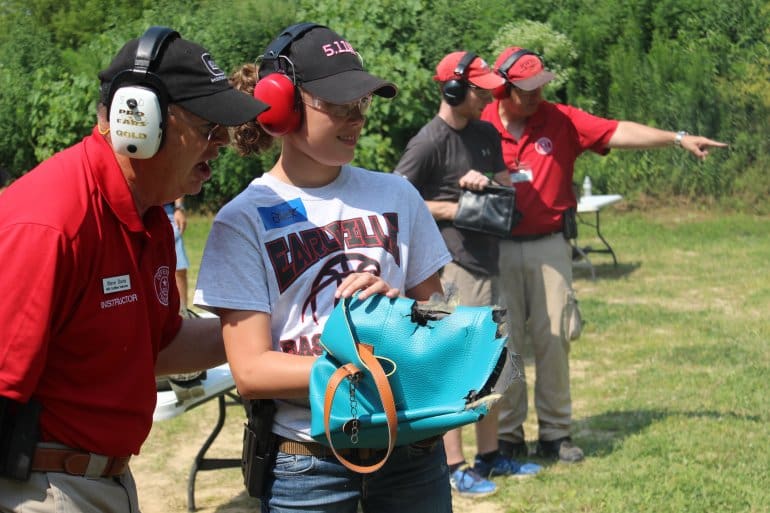
No, you won’t get hits out to fifty feet that way, but remember McGee’s Rule of Threes. Let that attacker get the surprise of his life when you let your little friend do the talking. Five rounds of .38 Special or .357 Magnum from Messrs. Smith & Wesson will get their attention every single time. The look on their face: priceless.
We often give the women (and eventually the men too) in our GSL Defense Training Essential Carry class an opportunity to shoot from inside a purse. It brings a lot of smiles and we make a lot of believers. In fact, they eat it up.
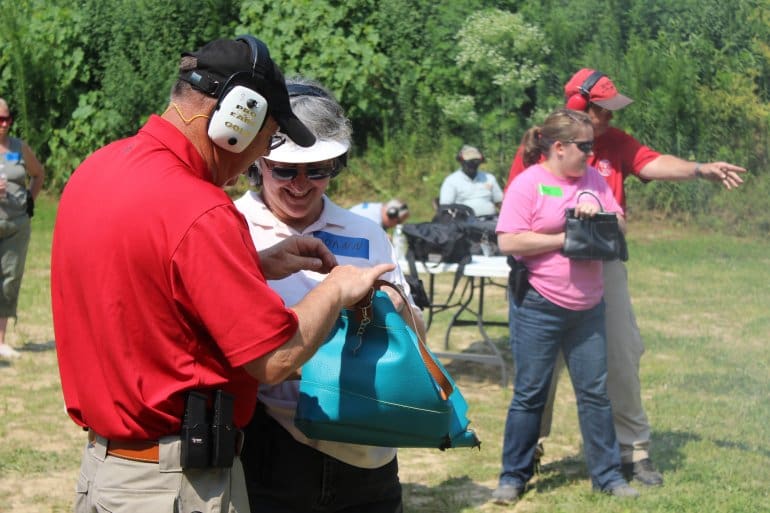
Wheel guns don’t leave your brass lying all over the place. For those carrying in non-permissive environments, that can be extra helpful. Before Illinois had legal concealed carry, more than a few career armed robbers and rapists turned up dead on Cook County Forest Preserve properties over the years. Obviously their intended victims chose not to notify authorities.
Additionally, these small revolvers also conceal well in the hand. Remember, a lot of deadly force encounters take place in low-light or no-light conditions. An attacker usually can’t see any better than you can. Again, let them experience the shock of their lifetime as they experience the bark and flash of your snubbie discharging at bad-breath distances.
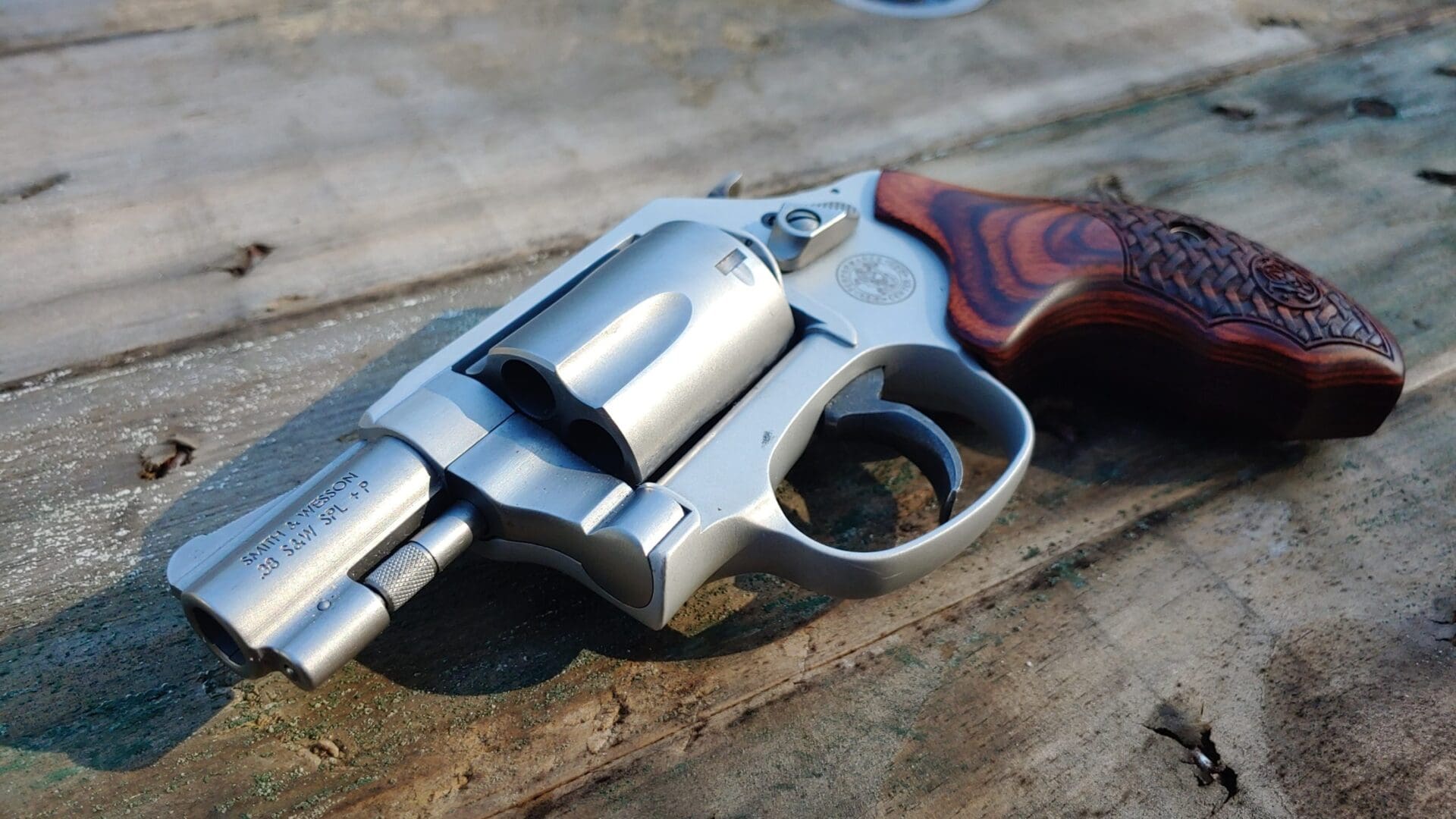
You can also hand one off to someone who has never shot before in an emergency and it can save their life. Even rank novices can figure out how to make a revolver work. As a close friend and retired FBI agent I know loves to say, revolvers are the ultimate point-and-click interface. Old Frank Wright also says that when God shoots recreationally, He uses a revolver. I don’t know about that, but I’m not as old as the retired G-man.
If weight bothers you, Smith and other manufacturers make wheel guns in lighter, exotic metals such as the Airweight and AirLite S&W models or Ruger’s .38 LCR.
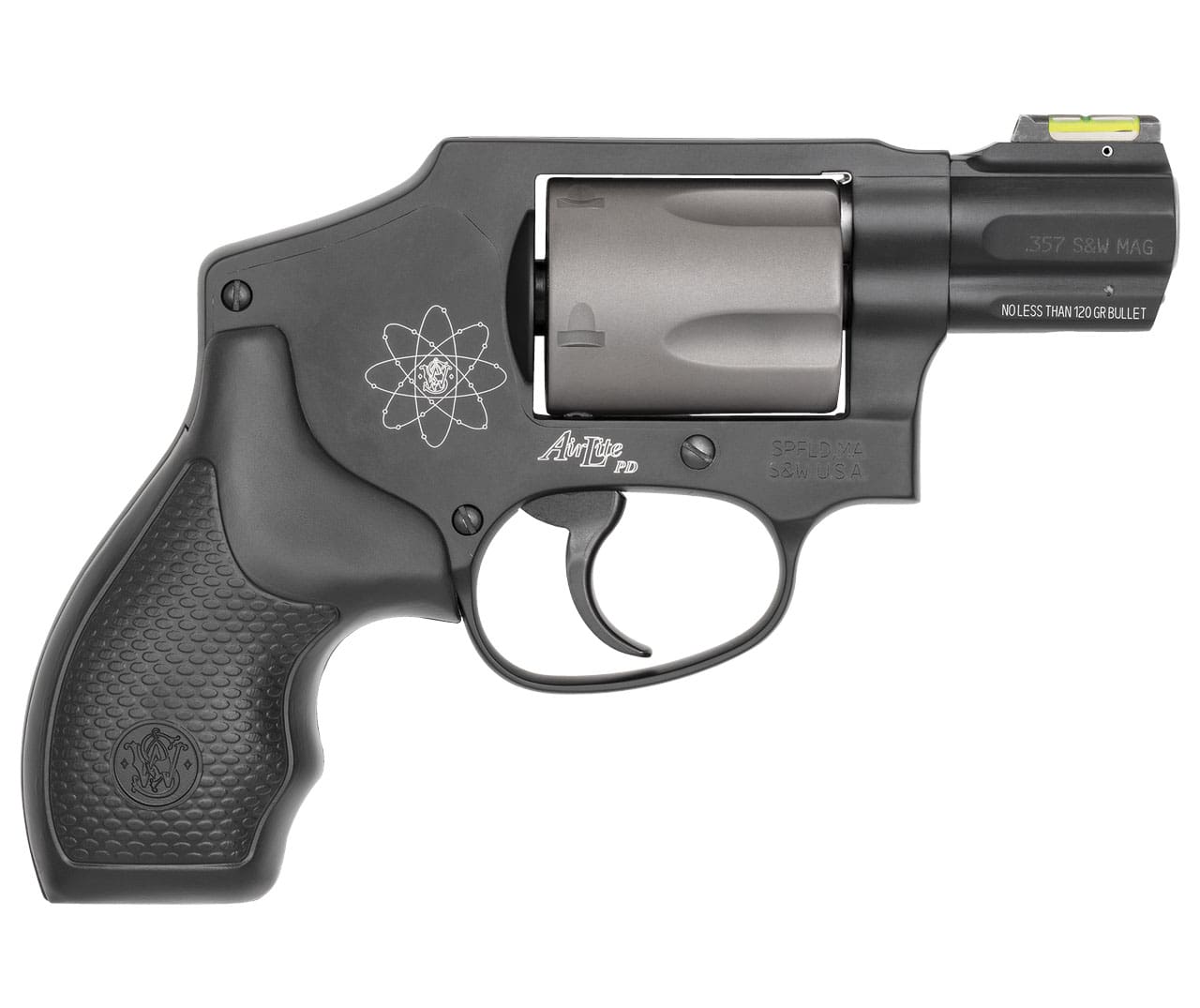
These concealed carry revolvers weigh next to nothing — 12 to 14 ounces — but expect stout recoil. You carry these to save your bacon, not to shoot recreationally. Unless you’re God.
Yes, the J-frame revolver still has a place in the 21st century. Don’t underestimate the man or woman using a small-frame revolver in a pocket holster as their carry gun. Especially in today’s world, they probably know how to use it well.

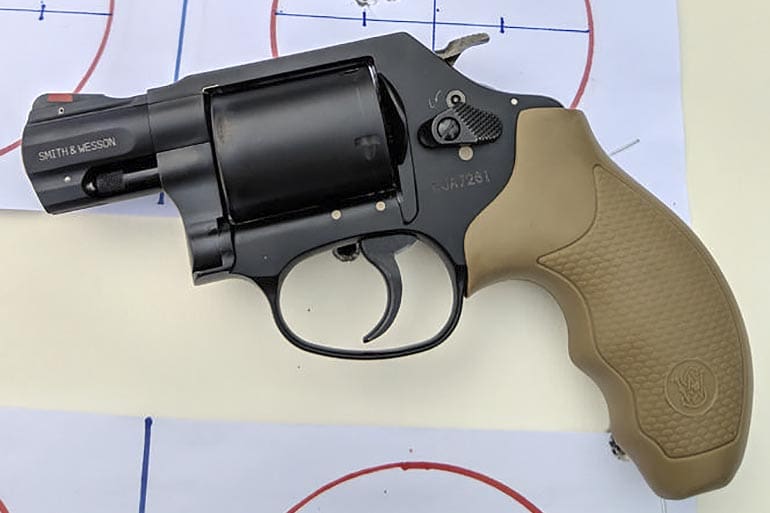
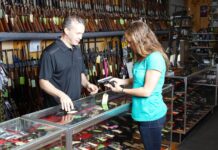

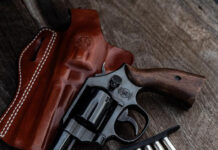
SP101 or sig 365L tend to be the daily carry depending on dress code. SP101 is almost always in the pocket in less safe areas but cant just walk away in the age of cell phones, ring, traffic cameras, and cheap digital cameras (results may vary by location).
I have carried one or two 5 shot revolvers on my person for going on 30 years and love them. I can hit a gallon milk jug with them at 100 meters. I do however “Just say No” to revolvers equipped with a Hillary hole.
I just say no to any firearms made by the Hillary Hole Company.
“I can hit a gallon milk jug with them at 100 meters”
Ha! Ha! Ha! I’d like to see that, ossifer.
Maybe you put an extra ‘zero’ on that by mistake. My bad, Lonely Ranger.
I am at the Dallas Pistol Club most weekday mornings right at sun up for about 15 minutes. I’ll gladly provide a demonstration. I can even do it firing one handed while laying on my back.
Tim, be careful. It’s not as hard as you may think.
I can’t remember the ladies name but she killed a member of an FBI entry team with a shot to the head from a pocket revolver and lived to tell the tale.
Just looked her up. Her name is Christina Korbe and she killed the agent in 2008 and was let out of prison last summer. That little 38 also penetrated his body armor and he was killed by a shot through the heart and not in the head like I said in a previous post.
I’ve carried a 442 since ’91. I can’t imagine not owning it. Recently picked up a nice Detective Special. I little bigger and heavier than the J frame, but I like it too. Those that belittle the revolver only expose their ignorance.
Ill never part with my 2 1/8 model 60 .357
The stainless steel does help J frame recoil.
I have bought and sold at least three 442s since then. The last was a Pro model factory cut for moon clips. They were all a joy to carry and never malfunctioned. I was just left unsatisfied after trying to shoot them rapidly. Slow firing while staging that trigger was easy, but I was all over the place when trying to do a cylinder dump, even at 7 yards. Wasn’t a problem for me when shooting a big heavy revolver like the 6-inch Anaconda I used to own. I like tight little groups and I wasn’t willing to put in the time to master that 442 trigger when quick and accurate came so much easier for me with semis at the time. Had better results with an LCR later on.
We had a shoot off at a recent revolver class. Three of us shooting, two J frames and my LCR. We all hit a man sized steel at 100 yards, first try. There were some surprised classmates.
Sometimes I carry a NOS NEF R73 Revolver shorty 5 rd. .32 H&R Magnum. Awful trigger out of the box and the muzzle crown needed tweaking, after the fixes it is fairly accurate and runs well.
‘…if you can master the double-action trigger of a revolver or a double-action semi-automatic, you can shoot any handgun well.’
First, hook the trigger with the joint of your trigger finger, don’t press it with the pad. Then put in a little dry fire practice trying to keep sights on target. Start slow and increase speed as you get the feel for the trigger. It doesn’t really take that much work to master the DA trigger well enough to be combat effective out to 15 yards or so.
Second, DA semi-autos and perhaps some striker fired pistols are harder IMHO to master than DA revolvers. I have reduced power springs in my DA revolvers and in my Beretta 92 and while the 14# (vs 20#) hammer spring reduced the DA pull to around 9 pounds, pretty close to the revolvers, it’s nowhere as easy to keep the sights on target.
Totally agree otherwise, although I’m not worried about ‘deep’ cover and usually carry a 3″ GP100. The first 5 or 6 shots are infinitely more important than the subsequent 9 or 10. Plus, .357 magnum! YMMV.
My .357 GP 100 is just about my favorite handgun, but it’s a big chunk of metal. Any advice on holsters and carry.
I carry mine in a DiSantis thumb break belt holster and just to be weird I run the belt outside the revolver – helps hold it in to the body tight like an IWB holster. Any decent heavy leather belt should do fine.
Also, if you haven’t done it already, replacing the 14# hammer spring with a 10# one and the 12# trigger return spring with an 8# one will do wonders for the trigger. Wolff and Wilson Combat sell kits for ~$10. Watched a couple YouTube vids and did it myself. Took about 45 minutes.
Being one of those in a non permissive area I will pocket carry a 442 on occasion. I always put it in a pocket holster.
Apparently the fascist left is convinced that our rights are zip code dependent. Sadly, some of our POTG believe the same thing.
My Glock 26 and my 642 – the two handguns I’ll never part with.
The only down side to my J-frame 632 (.327 Federal) is the price & availability of ammo. At this time I believe Ruger is the only manufacturer of .327 revolvers. Even reloading brass is hard to find (both .327 & .357) since everyone seems focused on 9mm.
“At this time I believe Ruger is the only manufacturer of .327 revolvers.”
Bud’s is showing several Rugers, several Taurus, several Charter Arms, and several Smith & Wesson models :
https://www.budsgunshop.com/search.php/type/firearms/caliber/10000672-327 federal magnum
Taurus also makes a 327 caliber revolver. And it is just as hard to find, as the ruger in 327.
https://www.taurususa.com/revolvers/small-frame-revolvers/taurus-327
Vinny hints at a very important point when it comes to j-frame revolvers: seriously consider getting one chambered in .327 Federal Magnum. Why? Because they are the same size as 38 Special and .357 Magnum j-frame revolvers and yet .327 Federal Magnum j-frame revolvers are able to fit SIX chambers in their cylinders (whereas .38 Special and .357 Magnum only have five chambers in their cylinders).
Thus, you get the compactness of a j-frame revolver and essentially the same “stopping power” as the same revolver chambered in .38 Special although you get SIX chamber cylinders.
There is nothing wrong with a j-frame revolver for self-defense. Like everything else, they have advantages and disadvantages compared other options.
The greatest disadvantage, in my humble opinion, is their limited capacity of 5-rounds of ammunition. While that is plenty to stop an opportunistic armed robber or rapist, it could easily be inadequate to stop a determined attacker or especially multiple determined attackers. The huge advantages are ease of use and reliability–including reliable function when pressed against your attacker’s body. (A semi-auto pistol will typically only fire once when pressed against an attacker’s body because pressing the slide/barrel into the attacker interferes with proper cycling.)
Of course the easy solution to a j-frame revolver’s limited capacity is to simply carry a second j-frame revolver in your other pocket–the infamous New York Reload!
I use the “thrust the gunm forth” method I learned from 60’s cop shows and I can’t hit shit.
motomike42,
Have you tried sideways gangster style? I’ll bet that works!
“Upside-down” my friend, “Upside-down”, no one shoots “sideways” anymore, it’s gauche.
In the pic of the Smith & Wesson ‘Airweight’, on the barrel, it says :
“NO LESS THAN 120 GRAIN BULLET”.
Why is that? Is it an issue with ‘bullet jump’?
Geoff PR,
I have to believe that their specification is about stopping bullets from jumping their crimp in their casings.
Having said that, my first (completely uneducated) guess is that heavier bullets would be more likely to jump crimp. Apparently my first (completely uneducated) guess is wrong.
The S&W airweight and scandium revolvers are so light that they are efficient little bullet pullers if you load them with anything over 120 grain bullets. 2 or 3 shots before the 4th and fifth cartridges’ bullets are sticking out far enough to stop cylinder rotation. The tip of the bullet hangs up on the forcing cone.
“…they are efficient little bullet pullers if you load them with anything over 120 grain bullets.”
but the warning indicates “No LESS than 120 grain bullets”
Your explanation runs counter to warning.
I regularly pocket carry a 642. Maintenance on this gun is ummm….sporadic. Recently, after almost a year without cleaning ,I took it out to a local range and fired it. The first shot caused an eruption of pocket lint and dust to fly in every direction but, it fired several cylinders full of 148 wadcutters without fail. So, I cleaned and lubed it and put it back in my pocket.
.357, rubber gloves, and a pocket full of somebody else’s 9mm.
Feeding the chickens.
Ahahahaha that’s gold. The csi types would sure be thrown for a loop. Just make sure to keep your prints off the brass
As others have noted the LCR/LCRx are the same size as a J frame S&W and in .327 you get six rounds. No one mentioned that in that chambering you can also shoot .32 H&R Magnum as well as full house .327 and .32 S&W Long. The full house loads exceed .38Spl +P loads and approach .357Mag velocity. Granted those tend to be lighter bullets but you still get six. YMMV.
My wife has a Taurus 805 polymer frame .357 snubbie. At 10 yards I can put all rounds center mass. It is not a gun you shoot regularly but it is reliable, controllable, and makes a great pocket pistol
“It is not a gun you shoot regularly”
So this means you do not regularly train with it either.
And that’s the problem with a 357 magnum. How many of these gun owners are really going to the range once a month???
Shooting 100 to 300 rounds of 357 magnum.
You do not have to shoot full power magnum loads for practice. Majority of my practice loads are mild .38’s.
I’ve had a model 642 (airweight 38 special) for 25 years; no idea how many rounds (at least 300+ per year) I’ve put through it, both standard and +P. Still works fine and I’ve never had any issues with bullet jump, maybe because I use either jacketed or hard cast bullets, 125 to 158 grains.
Earlier this year, I purchased a Charter Arms hammerless snubby, 6 shot in 32 H and R magnum. It has been impossible to find a Ruger 327 or the new Taurus 327. And speaking to one of my local gun dealers. She told me that she hadn’t seen a Ruger 327 in years. And many people have come in asking for them.
And the “mother load” of 32HR magnum ammo, has come in at another local gun store. I haven’t seen this caliber in stock in many years.
But there has been plenty of 32 S&W Long.
Was the Charter Arms new productiin? How do you like the function and craftsmanshi (quality) of the Charter Arms revolver in general? I’ve been considering their “Bulldog” .44 Special, if it was good enough for “Son of Sam” it should be good enough for me. Lol.
pug.
I really wish the “gun community” would talk more about ammo selection when the subject of revolvers comes up.
A snubby 38 is an experts gun. They recoil alot. Unless you use wad cutter ammo. Then the recoil is greatly reduced.
I didn’t like shooting my model 36 S&W Chiefs Special. Now using wadcutters my right thumb no longer bleeds. Because of the cylinder release button rubbing it. That’s what happens with normal 38 special rounds. Wadcutters are sooo much softer shooting.
And the 14 inches of penetration in gel blocks is nice too.
“I really wish the “gun community” would talk more about ammo selection when the subject of revolvers comes up.”
Shootingthebull410 has an *extensive* number of bullet test videos…
“Shootingthebull410 has an *extensive* number of bullet test videos…”
Apparently, it has been quite awhile since anything has been added to his website.
Federal used to have a Nyclad 38spl load that was fantastic. Most manufacturers also load what is known as the FBI load that is a 158ge semi wad cutter hollow point that sets the standard for 38spl loads. Back when you could find Nyclad ammo by the case it was my go to, now I pretty much stick with the FBI load.
The FBI load in a 442 airweight gave me bullet creep that caused a problem. I reserve that load for my k frames now.
I have shot thousands of rounds of the FBI load loaded by remington in the exact same gun without a single problem.
The load that caused the problem was Federal. +P 158 grain lead semi wadcutter hollow point.
Works a charm in my K frames.
That is the exact load from a different manufacturer that I have been shooting for as long as I have been shooting. I have also shot the Federal factory loads with no issues. They have identical specs and are even loaded with the same component.
To Chris T: I’ve liked the 32 H&R for a long time; I think it’s an underrated cartridge in snub nosed revolvers. I’m glad Charter Arms still supports this cartridge. Buffalo Bore usually has 32 H&R and 32 S&W long defensive loads available. I stocked up on both. These snubs make a great pocket EDC.
Am I the only one being turned off by all the adverts with some sort of shell fish covering ever square millimeter of someone’s skin?
I guess my ad blocker works.
Me hungry
Revolvers RULE!
I carry a LCR in 357. the grip tames recoil well. I prefer shooting 357 out of it over 38+p from a S&W 642 air weight. I work outside and often carry a couple of shot shells in the first couple of chambers in the warm months for snakes. I’ve tried shot shells in automatic pistols with disappointing results. different tools have different strengths in different applications.
two boxes of .357 from my lcr made y hand bleed, and a ruger impression tatoo—they were hotter .357, norma if i remember correctly—–now it is hold wadcutter—-which by the way, it seems that i might have to get another job to afford ammo———–just wondering, i was told that light weight .357 used in excess and burn out the top strap—not sure if it is the same issue
You say “potato”, I say “potato”. I don’t care what anyone caries or has for home defense, as long as they do one or the other, or both. I’m old school – because I’m old – and I use revolvers exclusively. But I do own and shoot pistols as well. Like my old buddy the tailor says, “Not everybody wears a 42 regular.”
I’ve got a “J”-frame, a Rossi 685 2-1/4″ barrel .38 Special, it’s a fantastic piece for concealed carry with it’s factory grips and is invisible on my 6’3″ 210lb frame but damn those grips sting after a few cylinders at the range (I’ve yet to find any direct replacements). I see others mentioning the Ruger SP101, I bought the fiancee’ one, the French Railway Police “turn-ins” in .38 Special w/3″ barrel, that were reimported by Atlantic a few years ago, she loves it, it soaks up recoil far better than the Rossi (a copy of the S&W Model 68), we both find the Trausch grips superb. As for size there is a difference between the two aforementioned models (excuse me while I whip this out) a side-by-side comparison will show that the Ruger SP101’s frame is a bit larger than a “J”-frame.
S&W 651 PD is my daily wear. No recoil for my aged hands and plenty of velo and penetration out of the barrel.
Airweight S&W 637 .38 spl, carry is a small medical bag when I have to go out of town. It’s just a “Oh crap” save my life gun, you know for like having to shop at Walmart, ETC.
Bootlickin’ Boch deleting comments yet again.
Of course his hero pigs in blue are contemptuous of the First Amendment, so I guess he’s just trying to emulate them.

Currently, my go to EDC revolver is a Ruger LCR 38. Love the trigger, much better than my S&W 642. Recoil with standard velocity or +P loads is not fun. Target wad cutters seem to be the best choice. I wish Federal still made their Nyclad hollow point. One of these days I may switch to an LCR in 22 magnum. I wish they chambered the 38 in 32 H&R.
Get the LCR .327 magnum. You can shoot .32 S&W Short, .32 S&W Long, .32 H&R Magnum, or .327 Federal Magnum cartridges.
My 638 is a wonderful revolver. I have the laser grips and they do to it what a scope does to a rifle. I never tried anything a 100, but bowling pins shake in their boots at 20. I passed the illinois CCL course the first time I shot it with that gun.
I don’t know how y’all dress, but something as large as a J-frame is hardly deep cover for me (and I live in 5.11 pants or shorts all year.
A Chief’s Special is probably going to be noticed in my pocket.
When I wore scrubs at work? No way.
Ruger LCR in 327 Magnum – six shots of 100 grains at 1,300 FPS with minimal recoil (and a lot of noise).
The ‘snubby’ is called a ‘belly gun’ for a reason. It was designed for concealment, not going to war. I carried a little S&W M60 back in the ’70’s when I worked UC and it served it’s purpose. I never had to shoot anyone with it, but it was better than no gun (Wyatt Earp advice). I was ‘frisked’ a number of times (both by bad guys and cops) and nobody ever found it (appendix-carry). In hot weather, I usually wore just a T-shirt and cut-off jean shorts. Our early loads were the FBI 158gr all lead HP by S&W. Later we switched to the LASD Rem. 125gr. JHP. As department firearms instructors, we discouraged our people from shooting at anything over 25yds. with them unless they had no other options (run, hide or get a long gun). You did not knowingly go into armed confrontations with just that little gun alone. One big negative with ‘snubby’s’ in deep concealment or ‘pocket carry’ is that the exposed hammer can get caught up in clothing when in fast/panic draw. Practice your draw WITH AN EMPTY GUN! They have a place in the self-defense spectrum, just keep your options open.
@Jim: It’s disappointing to read that your police colleagues were unable to find a J frame [in effect] in your waistband.
N Frames are great to carry, too, specifically Model 29-2.
I like my “new” 1975 Highway Patrolman quite a lot, as well. Not as pretty, but goes bang every time.
@RidgeRunner: N-frames aren’t quite “deep cover”.
Comments are closed.